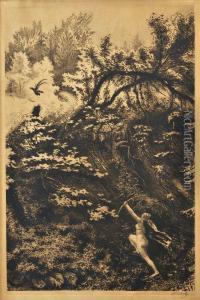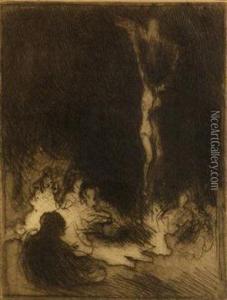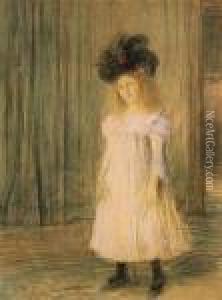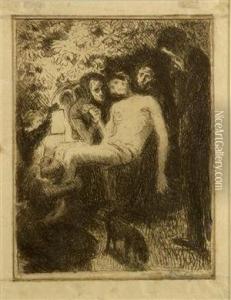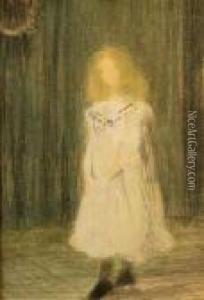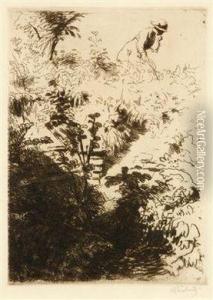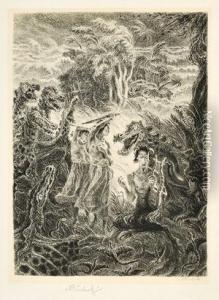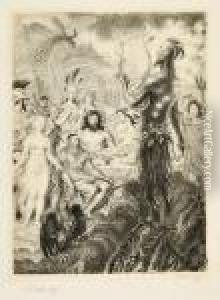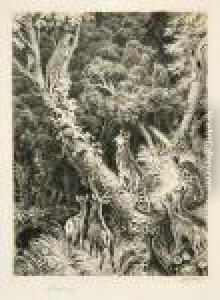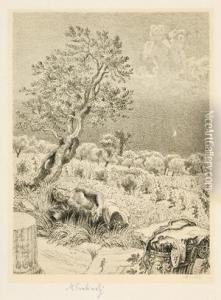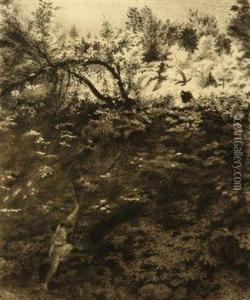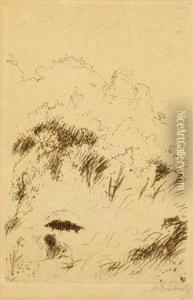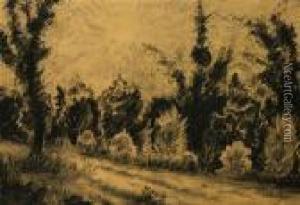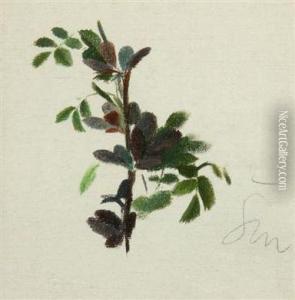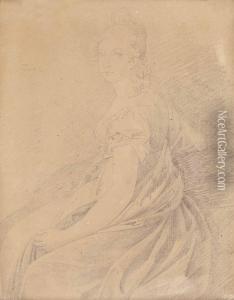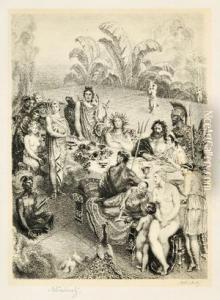Max Svabinsky Paintings
Max Švabinský was a prominent Czech painter, draughtsman, and graphic artist, known for his versatile contributions to Czech art in the first half of the 20th century. Born on September 17, 1873, in Kroměříž, Moravia, then part of the Austro-Hungarian Empire, Švabinský showed an early talent for drawing and painting. He studied at the Academy of Fine Arts in Prague under the guidance of professors such as Max Pirner and Vlaho Bukovac. His education was further enriched by a stay in Italy, where he was influenced by the works of the Italian Renaissance, as well as studies in Paris.
Throughout his career, Švabinský was known for his exceptional skill in drawing, which formed the foundation for his artistic work. His oeuvre includes a wide range of art forms, from portraiture and landscape painting to monumental compositions and official state commissions. Švabinský's style evolved over time, incorporating elements of Symbolism, Art Nouveau, and later, Realism. He was also adept at using a variety of techniques, including etching, lithography, and woodcut printing.
One of Švabinský's most celebrated works is 'The Cycle of Life', a series of allegorical prints that reflect on human existence. He was also known for his portraits of significant figures in Czech culture, as well as for designing banknotes and stamps for the newly independent Czechoslovakia after World War I. Throughout his life, Švabinský received numerous awards and honors, and his work was exhibited widely, both within Czechoslovakia and internationally.
Max Švabinský died on February 10, 1962, in Prague. His legacy is preserved in the collections of various Czech museums and galleries, and his influence on Czech art remains significant. Švabinský is remembered as a master draftsman and a key figure in the development of modern Czech art.
